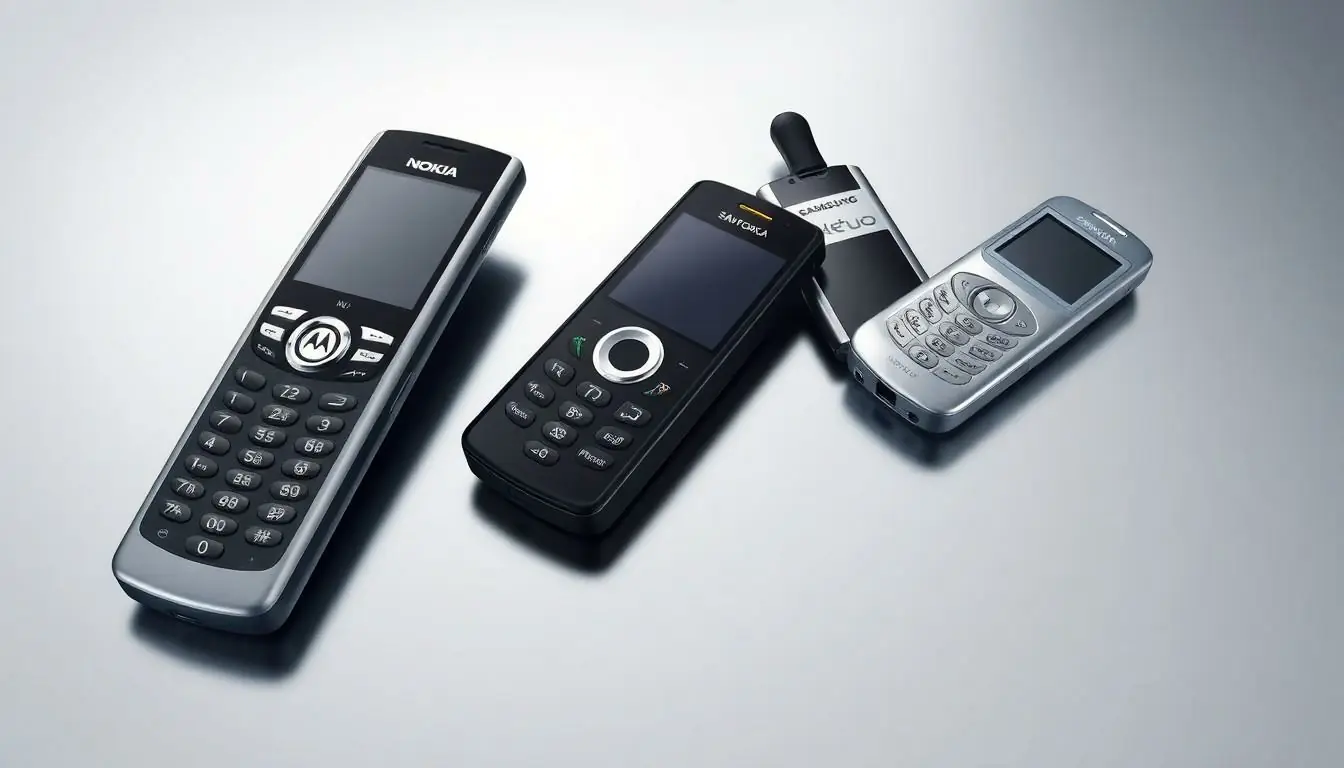In 2007, cell phones were like the wild west of technology—exciting, unpredictable, and occasionally confusing. Picture this: flip phones ruled the landscape, texting was a sport, and apps were just a twinkle in Steve Jobs’ eye. It was a time when carrying a phone felt like carrying a mini brick, and yet, people loved it.
Table of Contents
ToggleOverview of 2007 Cell Phones
The cell phone landscape in 2007 featured a range of innovative devices, with manufacturers focused on enhancing user experience. Flip phones dominated the market, offering compact designs and convenient usability. Brands like Motorola, Nokia, and Samsung led the charge, releasing models that became iconic.
Texting gained immense popularity during this time, with users sending millions of messages daily. The physical keyboard design became a staple, making texting faster and easier. Motorola’s Razr and Nokia’s N95 exemplified the combination of style and functionality that consumers craved.
Mobile applications represented a burgeoning market, albeit in its infancy. App stores were not yet mainstream, and most phones lacked the robust app ecosystems developed in later years. As a result, cell phones primarily served basic functions, including calling, texting, and some rudimentary web browsing.
Design trends in 2007 favored small, lightweight devices, reflecting the desire for portability. Despite their bulk compared to today’s standards, many users cherished their phones for their unique styles and features. The variety of colors and designs appealed to individual preferences, allowing for personalized expression.
Battery life played a crucial role in user satisfaction. Many cell phones could last several days on a single charge, a significant selling point as users relied on their phones for communication and entertainment.
2007 marked a pivotal moment in cell phone evolution, characterized by the popularity of flip phones, the rise of texting, and the early steps toward a more application-driven experience. The combination of style, functionality, and unique designs solidified cell phones as essential tools in everyday life.
Major Models Released in 2007

Several notable cell phones made a significant impact in 2007. This year showcased advancements in design and functionality across multiple brands.
Features of Notable Phones
Nokia’s N95 stood out with its impressive features, including a 5-megapixel camera and GPS capabilities. Motorola introduced the Razr2, an upgraded version of its iconic flip phone, offering a sleeker look and improved performance. The Samsung U700 featured a stunning touchscreen display, making it one of the first to incorporate such technology effectively. Each phone offered unique elements, such as high-quality cameras and multimedia capabilities, catering to the evolving needs of users. Enhanced battery life allowed for longer use, essential for those constantly on the go.
Comparison Between Models
When comparing the Nokia N95 and the Motorola Razr2, distinct differences emerge. The N95 provided superior multimedia options, while the Razr2 emphasized sleek design and portability. Samsung’s U700 distinguished itself with its touchscreen interface, appealing to users seeking modern aesthetics. Battery life varied, with the N95 lasting up to eight hours of talk time, whereas the Razr2 offered about six hours. Performance also differed; N95’s processing speed met the demands of multimedia applications, while Razr2 focused more on call quality and compactness.
Technological Advancements
Technological advancements in 2007 defined the cell phone landscape. The year showcased innovative designs, reflecting the desires for personalization and advancement.
Innovations in Design
Designs focused on compactness and stylish aesthetics. With phones like Motorola’s Razr2, sleekness became a priority, appealing to fashion-conscious consumers. Unique color options and lightweight materials allowed for personal expression. Users appreciated flip phones for their portability, and many models featured polished finishes and innovative structures, enhancing the overall user experience. Breakthroughs in ergonomics meant devices felt more comfortable in hand, fostering a connection between users and their phones.
Improvements in Functionality
Functionality expanded as devices became more advanced. Noteworthy models offered features like 5-megapixel cameras and built-in GPS capabilities, elevating multimedia experiences. Nokia’s N95 provided a robust platform for capturing images and navigation, thereby enhancing everyday tasks. Users experienced faster internet connectivity, albeit still limited compared to later years. Enhanced battery life ensured longer use before recharging, accommodating the needs of an increasingly mobile society. Apps emerged to address niche needs, laying the groundwork for future developments in smartphone ecosystems.
Market Impact of 2007 Cell Phones
2007 marked a transformative year in the cell phone market, with significant changes in consumer behavior and sales trends.
Consumer Reception
Consumers embraced 2007 cell phones with enthusiasm. The Motorola Razr and Nokia N95 became status symbols due to their cutting-edge features and stylish designs. Users appreciated the convenience of physical keyboards, which facilitated the surge in texting. A noticeable shift toward multimedia capabilities occurred, with many seeking phones that boasted enhanced cameras and GPS functionality. Desire for personalization led to increased popularity of color options and designs. Sales trends reflected the growing consumer appetite for devices that combined style with functionality.
Sales Performance
Sales figures in 2007 illustrated a booming market. The introduction of models like the Razr2 and Samsung U700 captured substantial market share. Major brands such as Motorola, Nokia, and Samsung continued to dominate, collectively selling millions of units worldwide. The demand for innovative features significantly increased overall sales performance. As a result, 2007 saw higher average selling prices for smartphones, driven by growing consumer expectations. The rapid pace of technological advancement laid the foundation for future market trends and consumer preferences.
The cell phone landscape of 2007 was a vibrant mix of innovation and personal expression. As users navigated the shift from basic functionality to more advanced features, devices like the Razr2 and N95 emerged as symbols of style and capability. This era marked the beginning of a significant transformation in how people communicated and interacted with technology.
With the surge in texting and the introduction of multimedia capabilities, cell phones became essential tools for everyday life. The excitement surrounding these devices set the stage for future advancements, laying the groundwork for the smartphones that would soon dominate the market. The journey of cell phones in 2007 reflects a pivotal moment in technology that continues to influence design and functionality today.





